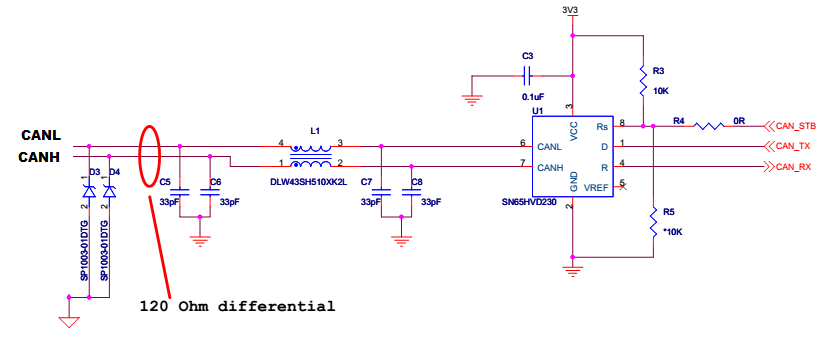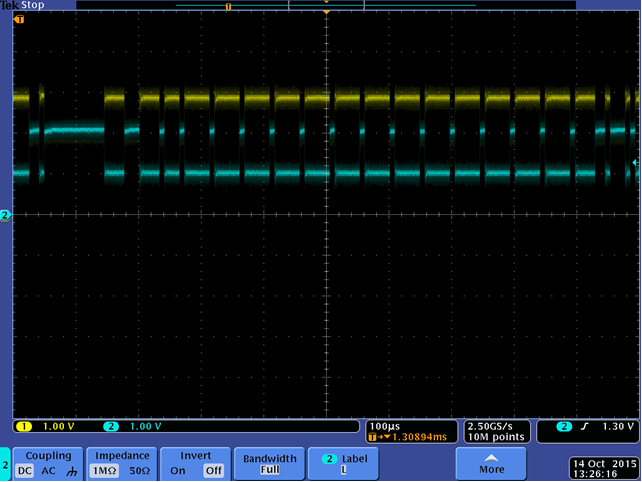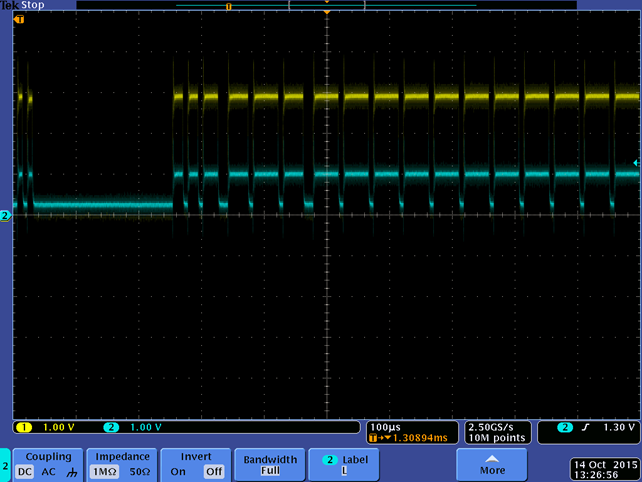Hello,
I am having a CAN network system with 4 nodes. All the nodes have SN65HVD230 CAN transceiver. For ESD protection, SP1003-01DTG, TVS diode from littelfuse is used from both CANH and CANL lines to ground.
Issue is that the diode gets shorted to ground.
What can be the cause of this?





